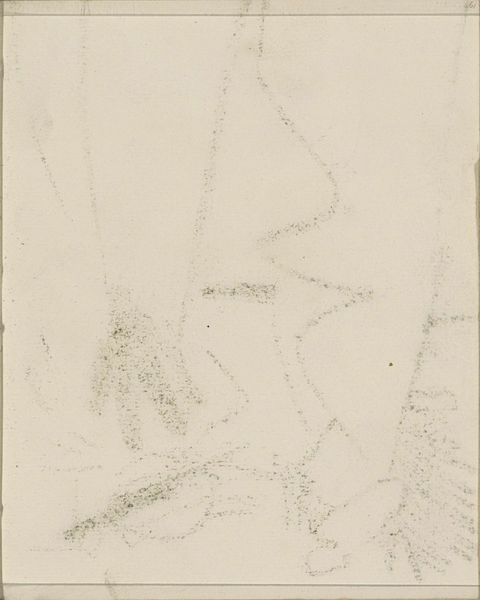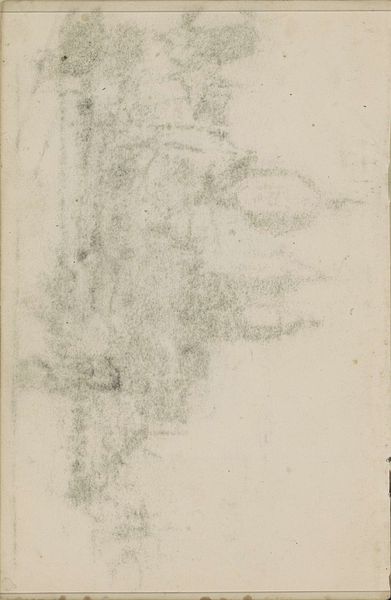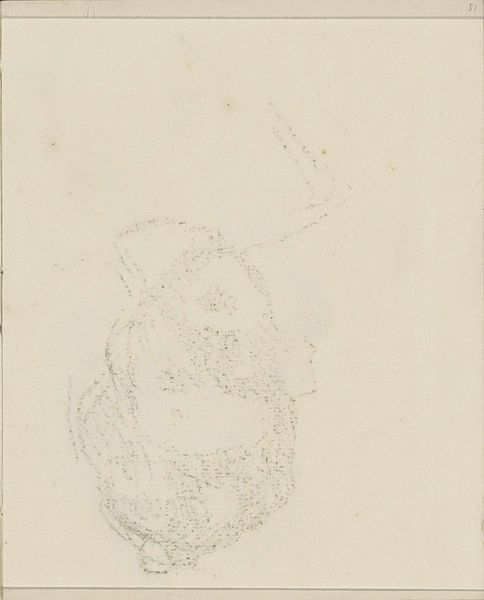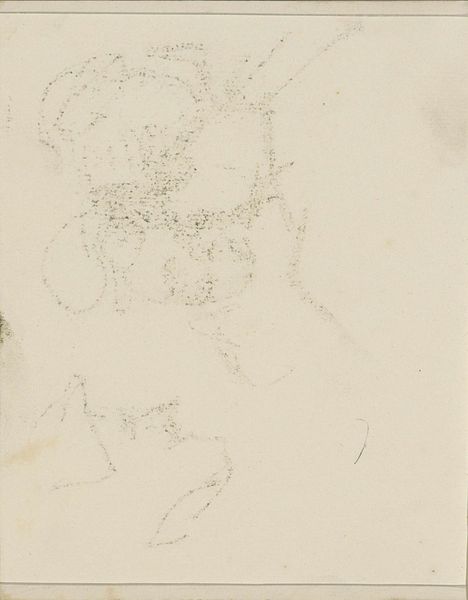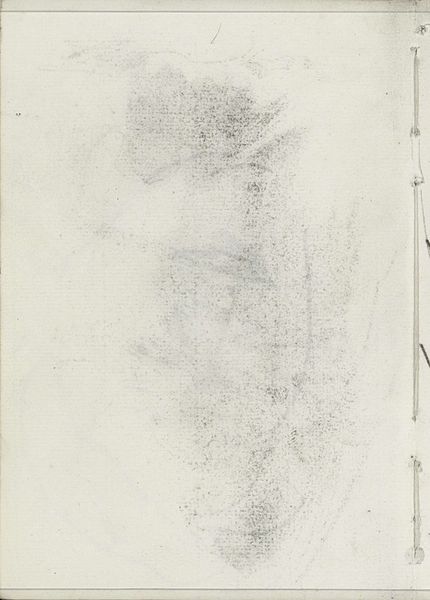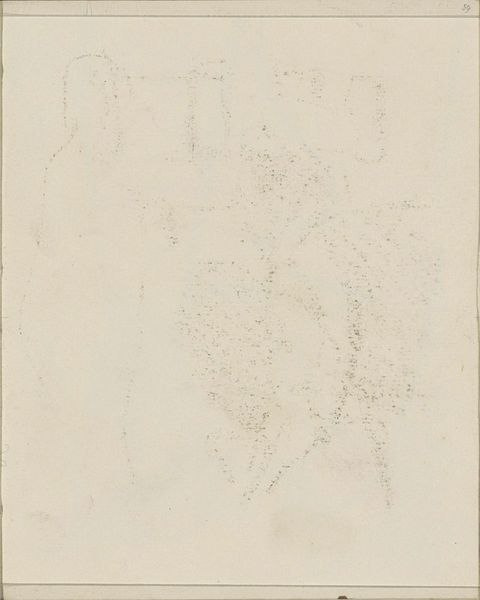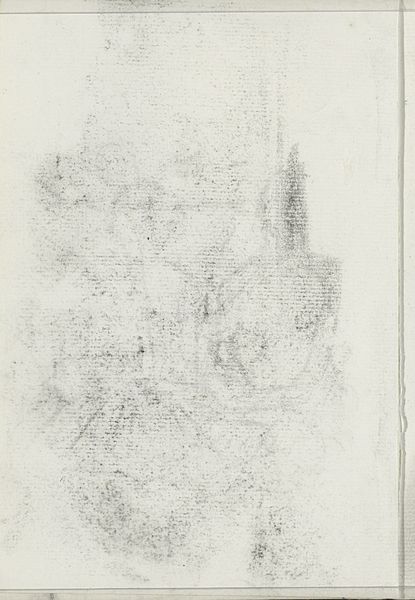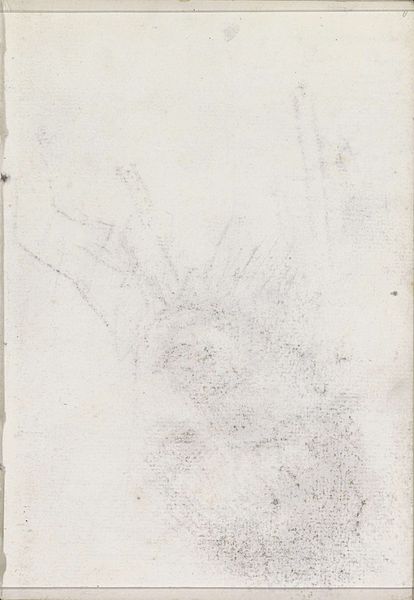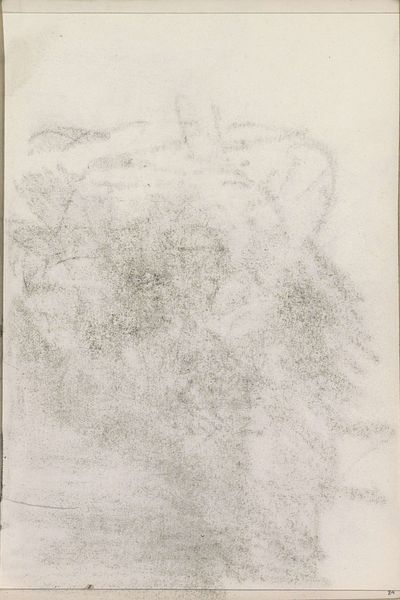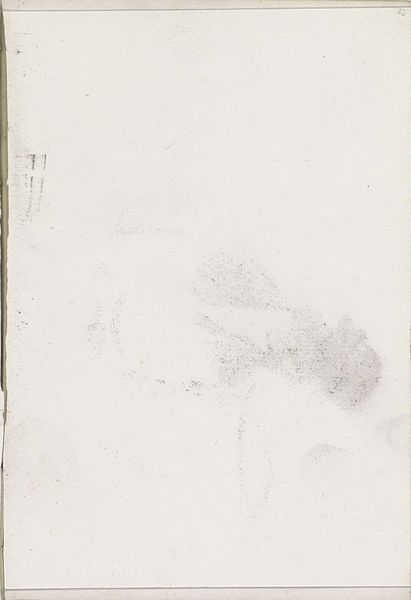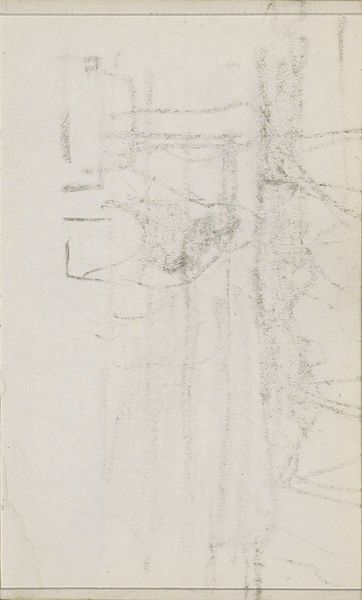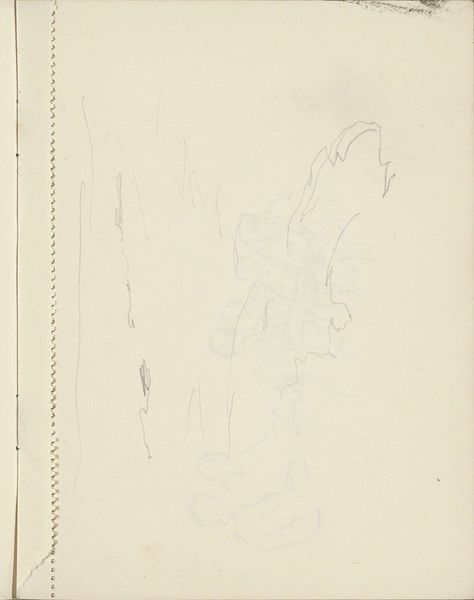
Copyright: Rijks Museum: Open Domain
Curator: Here we have a work by Isaac Israels, "Abklatsch van de krijttekening op pagina 48," dating roughly between 1886 and 1903. It’s currently held at the Rijksmuseum, and it seems to be a chalk drawing transferred onto paper. Editor: My first impression? Fleeting. It’s like looking at a ghost of an image, something barely there but hinting at a more substantial form. The light pencil work evokes a sense of impermanence, as if the image might vanish any second. Curator: Given Israels' background and engagement with impressionism, that ephemerality is central, isn’t it? The materials themselves speak to that--chalk being a readily available medium, easily smudged and erased, paired with relatively inexpensive paper, hints that it was conceived more as a practice exercise than a final work for public consumption. Editor: Absolutely. But it’s that very transience that makes it so evocative. The faint lines invite you to participate in completing the image, to project your own meanings onto it. There’s something almost Rorschach-like about the suggestive forms, playing with how our minds interpret and construct visual information. Curator: I agree; there's an openness about it that aligns well with the impressionistic ethos. The concept of *abklatsch*, of lifting an image, suggests the devaluing of the handcraftmanship. What this piece communicates to me is the constant questioning of how the act of production affected artistic hierarchy. Editor: That’s a fascinating point. Thinking about the iconography, or perhaps *anti*-iconography at play. Israels seems to be stripping away layers of meaning, refusing to deliver a clear, defined image. It almost functions as a visual rejection of narrative, an embrace of pure sensory experience, and a commentary of his social circles at the time. Curator: Indeed, and if you look closely at the visible hand-drawn additions on the page, those notations also speak to the mundane aspects of artistic practice, far removed from any romanticized ideal. A lot can be gleaned from the methods involved to produce such pieces. Editor: It's left me pondering on the power of suggestion. Perhaps in its unfinished nature, it invites more consideration from its audience. Curator: Yes, there’s beauty to be found not only in its process of being copied, but in this image's very state of incompleteness.
Comments
No comments
Be the first to comment and join the conversation on the ultimate creative platform.
